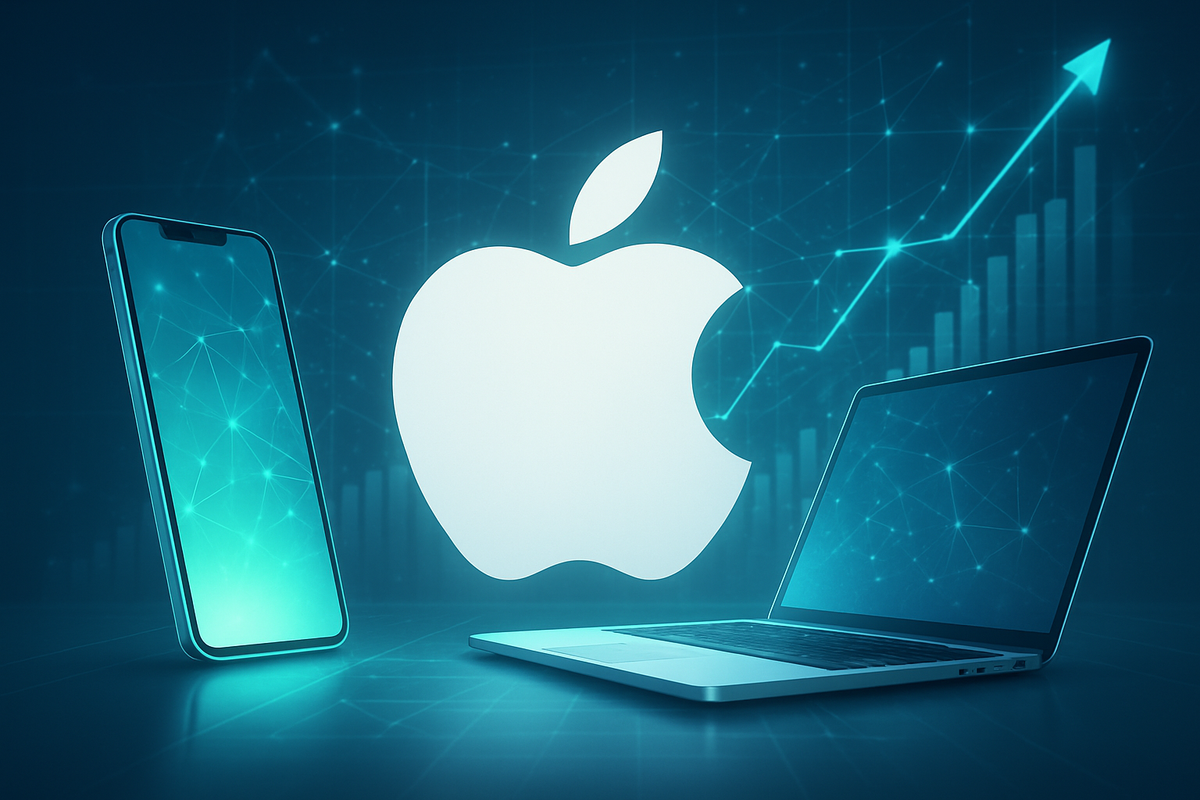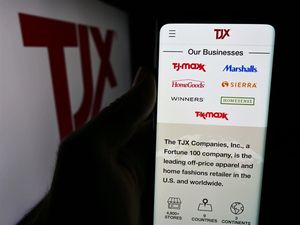
Cupertino giant Apple (NASDAQ: AAPL) is exhibiting a modest yet significant positive performance on November 20, 2025, with shares seeing a slight uptick, pushing the stock above its 15-day moving average. While not a dramatic surge, this movement underscores a powerful underlying bullish sentiment and robust market position, shielding the company from recent headwinds and reinforcing its status as a cornerstone of the financial markets. Investors are closely watching as Apple continues to leverage its diversified revenue streams and innovative product pipeline to maintain stability and growth.
Unpacking Apple's Enduring Market Strength
The current positive trajectory for Apple (NASDAQ: AAPL) on November 20, 2025, is not merely a fleeting market fluctuation but a testament to several deeply embedded strengths. Analysts widely maintain a "Buy" or "Moderate Buy" rating for Apple, with an average price target around $278.22 and some forecasts reaching as high as $345.00, signaling strong professional confidence in the company's future. This robust endorsement follows Apple's impressive Q3 2025 earnings report on October 30, 2025, where it comfortably surpassed analyst expectations. The company reported $1.85 earnings per share (EPS), beating estimates by $0.11, and recorded revenue of $102.47 billion, an 8.7% year-over-year growth. This solid financial bedrock has prompted firms like Morningstar to increase their valuation of the tech titan.
Beyond its core financial performance, Apple's strategic focus on its services ecosystem continues to pay dividends, with revenues in this segment growing by over 15%. This diversification is critical, reducing reliance on hardware sales and enhancing overall financial stability. Geographically, Apple has made significant inroads into international markets, particularly India, where it achieved a record 10.4% market share in Q3 2025, driven by 5 million iPhone shipments. This growth is particularly notable given a slowdown in the broader Indian smartphone market, with projections for 15 million shipments in India for the full year 2025.
Product innovation and strategic AI integration remain central to Apple's market appeal. The iPhone 16, launched prior to November 2025, is heralded for its AI-centered advancements, anticipated to fuel a "supercycle" in smartphone sales for 2025 with an estimated 90 million units. Furthermore, the October 2025 introduction of the new 14-inch MacBook Pro and the upgraded Apple Vision Pro, both powered by the M5 chip, signifies a "next big leap in AI for the Mac," reinforcing Apple's commitment to cutting-edge technology across its product portfolio. From a regulatory standpoint, a favorable outcome in the Department of Justice's antitrust case against Google (NASDAQ: GOOGL) reportedly preserved Apple's high-margin revenue from search providers. Additionally, Apple's August 2025 announcement of a $600 billion investment in U.S. manufacturing was positively received, potentially mitigating the impact of incremental tariffs on U.S.-bound iPhones from India.
Market Ripple Effects and Corporate Beneficiaries
Apple (NASDAQ: AAPL) itself is the primary beneficiary of its strong performance and strategic initiatives. The continued growth in its services division, driven by the App Store and other subscription offerings, ensures a more predictable and high-margin revenue stream. The success of the iPhone 16 and other M5-powered devices like the MacBook Pro and Apple Vision Pro not only boosts direct sales but also strengthens the entire Apple ecosystem, encouraging users to invest further in its hardware and software. This ecosystem effect creates a formidable competitive moat, making it challenging for rivals to directly compete on user experience and integrated functionality.
While Apple thrives, its robust performance can create ripple effects across the technology sector. Component suppliers, particularly those involved in advanced chip manufacturing (e.g., Taiwan Semiconductor Manufacturing Company - NYSE: TSM), camera modules, and display technologies, stand to benefit from increased orders driven by anticipated "supercycles" and continuous product refreshes. Conversely, competitors in the smartphone (e.g., Samsung Electronics - KRX: 005930), PC (e.g., HP Inc. - NYSE: HPQ, Dell Technologies - NYSE: DELL), and wearable (e.g., Alphabet - NASDAQ: GOOGL, Samsung Electronics - KRX: 005930) markets face intensified pressure to innovate and differentiate their offerings. Apple's aggressive push into AI and its vertically integrated hardware-software strategy raise the bar for the entire industry, potentially squeezing margins for companies that rely heavily on commodity hardware or less differentiated software experiences. The company's significant investment in U.S. manufacturing also benefits the domestic manufacturing sector and associated logistics companies.
Broader Industry Trends and Strategic Implications
Apple's current market standing is deeply intertwined with several broader industry trends. The accelerating integration of Artificial Intelligence (AI) into consumer devices is perhaps the most significant. Apple's focus on on-device AI with the iPhone 16 and M5-powered Macs positions it at the forefront of this shift, which promises enhanced user experiences, privacy, and efficiency. This move fits into a larger industry trend where tech giants are vying for AI dominance, moving beyond cloud-based solutions to deliver more personalized and responsive AI directly to users. The continued expansion of Apple's services revenue highlights the industry-wide pivot towards subscription-based models and recurring revenue, providing greater stability and higher valuations for companies that successfully build and monetize digital ecosystems.
The company's success in expanding its market share in emerging economies like India, despite broader market slowdowns, underscores the increasing importance of these regions for future growth in the global tech landscape. This strategy reflects a broader trend among multinational corporations seeking diversification away from saturated Western markets. Regulatory scrutiny, as seen in the Google antitrust case, remains a significant factor for all tech giants. Apple's favorable outcome in that case and its proactive investment in U.S. manufacturing demonstrate a strategic awareness of geopolitical and regulatory pressures, aiming to mitigate risks such as tariffs and antitrust actions. Historically, Apple has shown a consistent ability to innovate and adapt, often setting industry standards that competitors then follow, reinforcing its role as a market leader and trendsetter.
Navigating the Future: Opportunities and Challenges Ahead
Looking ahead, Apple (NASDAQ: AAPL) faces a dynamic landscape filled with both opportunities and challenges. In the short term, the success of the iPhone 16 "supercycle" and continued adoption of the Apple Vision Pro will be critical indicators of its hardware momentum. The ongoing growth of its services segment will also be closely watched for sustained revenue diversification. Long-term possibilities include further advancements in augmented reality (AR) and virtual reality (VR) technologies, deeper integration of AI across its entire product ecosystem, and continued expansion into new geographic markets. Strategic pivots may involve further vertical integration, potentially bringing more component manufacturing in-house, or aggressive acquisitions in emerging tech sectors to maintain its innovation edge.
Market opportunities could emerge from new product categories, such as advanced health monitoring devices or smart home innovations, where Apple could leverage its brand and ecosystem. However, challenges persist, including intense competition from other tech giants, potential supply chain disruptions, and evolving regulatory environments globally, particularly concerning antitrust and data privacy. The company must also navigate consumer sentiment shifts and economic downturns that could impact discretionary spending on premium devices. Potential scenarios include Apple solidifying its position as the dominant AI platform for consumers, or facing increased pressure from innovative startups and aggressive competitors. Investors should monitor Apple's R&D investments, M&A activities, and quarterly earnings reports for signs of strategic execution and market adaptation.
A Resilient Giant: Key Takeaways and Investor Outlook
In summary, Apple's (NASDAQ: AAPL) performance on November 20, 2025, while not a record-breaking surge, highlights its remarkable resilience and underlying strength in a complex market. Key takeaways include the company's robust financial health, driven by strong earnings and a flourishing services division, coupled with strategic product innovation in AI (iPhone 16, M5 chip) and successful international expansion (India). These factors, supported by strong analyst confidence and favorable regulatory outcomes, have created a strong foundation that mitigates recent headwinds such as Warren Buffett's Berkshire Hathaway trimming its stake or the patent dispute over blood oxygen sensors.
Moving forward, the market will likely assess Apple's ability to capitalize on the AI revolution, sustain its growth in services, and navigate the ever-present competitive and regulatory pressures. Investors should continue to watch for developments in its product pipeline, particularly in AR/VR and AI integration, as well as its strategic investments in manufacturing and emerging markets. Apple's long-term significance lies in its consistent ability to innovate, build powerful ecosystems, and adapt to evolving technological and market landscapes, making it a crucial stock for any diversified portfolio. Its modest positive movement today is a quiet affirmation of its enduring strength and strategic foresight.
This content is intended for informational purposes only and is not financial advice





